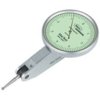Martin Shaw
Western Thunderer
Well it' s here.

just about 24 hours after it was ordered, which I think is pretty good. Removing the lid and sides of the box, big roll of drums,

Of course it's all covered in horrible slimy preservative, which has done its job, but cleaning it off is a muck job. One issue I don't like is the change wheel tooth alignment,

the idler gear is some 3mm too far to the right so my 70 year old design Cowells will be needed to make a suitable spacer, and like Ken the change wheels are going metallic toot sweet. I gave it a test run and the motor/ spindle ran well, engaging the lead screw caused a horrible dry bearing scrape, which I tracked doen to the leadscrew pillow block at the other end. Neither of them have oil holes which seems a cheapskate oversight, easily rectified but undoubtedly voiding the warranty. Anyway it all seemd to basically function correctly, so I did what any self respecting engineer would do, and took it to bits.

All ready for a massive cleaning tomorrow. There is an interesting financial point to consider here. I paid a smidgeon under £550, and considering the costs and profit for the importer, shipping etc, the factory is making this for something less than say £300. At that price it can't possibly compete with traditional makes like Myford, and why would you expect it to. Having said that apart from a gap bed it will do pretty much anything tha a Myford can, at a fraction of the price, and if properly set up at a perfectly acceptable level of accuracy, at least for my needs. It of course won't last 50 years, but I wont be bothered by then. Well pleased.
Regards
Martin

just about 24 hours after it was ordered, which I think is pretty good. Removing the lid and sides of the box, big roll of drums,

Of course it's all covered in horrible slimy preservative, which has done its job, but cleaning it off is a muck job. One issue I don't like is the change wheel tooth alignment,

the idler gear is some 3mm too far to the right so my 70 year old design Cowells will be needed to make a suitable spacer, and like Ken the change wheels are going metallic toot sweet. I gave it a test run and the motor/ spindle ran well, engaging the lead screw caused a horrible dry bearing scrape, which I tracked doen to the leadscrew pillow block at the other end. Neither of them have oil holes which seems a cheapskate oversight, easily rectified but undoubtedly voiding the warranty. Anyway it all seemd to basically function correctly, so I did what any self respecting engineer would do, and took it to bits.

All ready for a massive cleaning tomorrow. There is an interesting financial point to consider here. I paid a smidgeon under £550, and considering the costs and profit for the importer, shipping etc, the factory is making this for something less than say £300. At that price it can't possibly compete with traditional makes like Myford, and why would you expect it to. Having said that apart from a gap bed it will do pretty much anything tha a Myford can, at a fraction of the price, and if properly set up at a perfectly acceptable level of accuracy, at least for my needs. It of course won't last 50 years, but I wont be bothered by then. Well pleased.
Regards
Martin


 . A small slug of cast iron was inserted, peened down and dressed off near invisible with a slip-stone.
. A small slug of cast iron was inserted, peened down and dressed off near invisible with a slip-stone.
 A lot have now been replaced and after a lot of work I am happy that I have adjusted out most of the backlash and all of the shake in the slides. Now runs as smoothly as the proverbial sewing machine.
A lot have now been replaced and after a lot of work I am happy that I have adjusted out most of the backlash and all of the shake in the slides. Now runs as smoothly as the proverbial sewing machine. 



